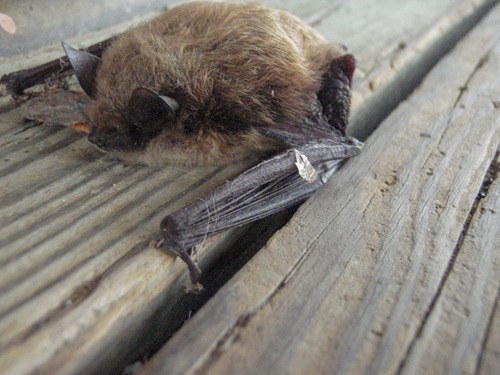Last updated: January 17, 2024
Lesson Plan
Save the Bats

- Grade Level:
- Lower Elementary: Pre-Kindergarten through Second Grade
- Subject:
- Science
- Lesson Duration:
- 60 Minutes
- State Standards:
- k-LS1-1, K-ESS3-1, K-ESS3-3, G.9.K.1, G.9.1.1, 2-LS4-1, 3-LS3-2, 4-LS1-1, 4-LS1-2, G.9.4.1, 5-ESS3-1, 6-ESS3-3
- Thinking Skills:
- Remembering: Recalling or recognizing information ideas, and principles. Understanding: Understand the main idea of material heard, viewed, or read. Interpret or summarize the ideas in own words.
Essential Question
Why does a National Park protect animals?
How important are animals to an ecosystem?
Objective
Students will be able to understand bats and their importance, as well as identify their characteristics, habitats and ways to help insure their survival.
Background
This program will educate students about the benefits of bats and their importance to the park’s ecosystem. Activities will be incorporated to help distinguish the difference between birds and bats, demonstrate echolocation, illustrate bat anatomy, and provide them with something to take home for reinforcement. Students will learn how they can help protect bats against human intervention and natural threats such as White-Nose Syndrome.
Preparation
Ensure the following materials are available prior to giving lesson. Materials include:
- Book Stellaluna by Janell Cannon
- Bat Diagram
- Diagram of Echolocation
- Bandana or Blindfold
- Photos of Tri-Colored, Ozark Big Eared, and Gray Myotis bats. Little Brown colony with White-Nose. Tri Colored Bat Skull or Skeleton.
Lesson Hook/Preview
What do you think of when you think of bats? Are they neat? Or maybe a little scary? Or maybe just annoying? Well, bats are a very important animal. They aren’t really scary; bats are actually really cool mammals, and they do lots of things that help people!
Procedure
Step 1: Read Stellaluna by Jannel Cannon aloud to class (10 minutes).
Step 2: Ask students questions about the story after reading including descriptions on what happened at the beginning, middle, and end of story. Additional questions included in lesson plan.
Step 3: Lead students through activity to demonstrate difference between bird and bat movement.
Step 4: Compare and contrast the life of bats and birds to each other. This includes their homes, their diet, and how they care for their young.
Step 5: Connect bats to the Buffalo National River. Include locations where they are commonly found and why they are important to the river.
Step 6: Lead students through activity to demonstrate echolocation ("Marco Polo").
Step 7: Introduce White-Nose Syndrome, its effects on bat populations, and how students might help protect bat populations.
Vocabulary
Mammal, insectivore, frugivore, echolocation, nocturnal, White-Nose Syndrome
